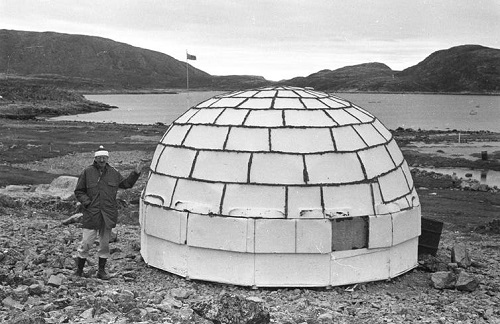 Sunday, May 5, 2024
Sunday, May 5, 2024  Sunday, May 5, 2024
Sunday, May 5, 2024 
The COVID-19 pandemic and outbreaks in several communities across Nunavut have brought the Inuit housing crisis into focus. Inadequate and unsafe housing is endemic in many Inuit communities and has been blamed for poor health outcomes and susceptibility to infectious disease for decades.
And these problems have historical roots. Canada has been running federal government housing programs for 65 years in the North, including experimental Styrofoam igloos that were tested at Kinngait, Nunavut from 1956 to 1960.
The only reporting of the Styrofoam igloo project was in the children’s section of The Age, a newspaper in Melbourne, Australia on Sept. 9, 1960. The headline read: “Eskimos Find Plastic Igloo Better Than Snow Houses!” The article informed its young readers that the plastic version of the traditional Inuit housing structure was made from 18 inch by 36 inch Styrofoam blocks, held together by wooden meat skewers and adhesive.
The idea of housing people in Styrofoam huts seems laughably inadequate and even callous today, particularly when compared to housing standards for non-Indigenous Canadians. But the use of Styrofoam igloos is one of the few instances where the Canadian government tried providing Inuit with culturally sensitive housing.
Keep reading on Nunatsiaq News
Check out more news below: